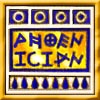
Astronoë is a Phoenician Goddess, called "the Mother of the Gods". She is likely a late version of the Goddess Ashtart or Astarte, who passed through Greek influence and was borrowed back by the Phoenicians under a new name in Hellenistic times. Astronoë, a Greek name, contains astron, "the stars", and in Latin Astronoë was called Coelesti, "the Heavenly One", which both recall the meaning of the name Astarte, "Star", referring to the planet Venus. The association with Ashtart/Astarte notwithstanding, Her legend is quite similar to that of Kybele, the Mountain Mother of Asia Minor, Whose cult involved ecstatic rituals and divine madness. In Tyre Astronoë was associated with the God Melqart, the "King of the City" of Tyre, who seems to have been the original inspiration for the Greek hero Herakles. In the city of Sidon in the Lebanon, Astronoë's consort was Eshmun, a God of Healing, whom the Greeks equated with Asklepios, the divine physician (Who is still invoked in the Hippocratic oath taken by doctors). According to the Greek version of the legend, Eshmun was a handsome young man who attracted the devotion of the Goddess Astronoë. One day while out hunting, the Goddess found him and he, unwilling, fled; She pursued, but as She was about to catch him, in his panic he cut off his own genitals with an ax, an instrument hardly known for its precision. He died from the resulting blood loss, but Astronoë restored Him to life, making Him a God, and naming Him Paean, which means "Physician", "Healer", or "Song of Praise", and which is also a title of Apollo. Both Eshmun and Melqart were worshipped in Carthage; the main Goddess of that city was Tanit, who was, like Astronoë, honored with the title "the Heavenly One" as a Goddess of Stars. |
|
|



